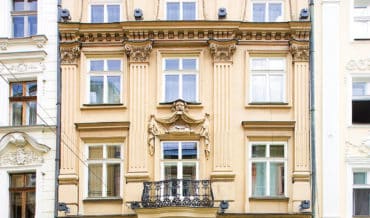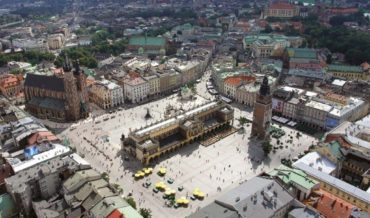Contents
Key Facts
• Born in Mława (1886), died in Kraków (1978) – prominent Polish painter of the 20th century
• Studied at Warsaw School of Fine Arts (1917-1920) and Academy of Fine Arts in Kraków (1921-1924)
• Member of the prestigious Paris Committee (Kapists) artistic group in Paris (1924-1930)
• Professor and Dean at the Academy of Fine Arts in Kraków
• Co-editor of "Przegląd Artystyczny" art magazine
• Award winner including multiple national and international recognitions
• Specialized in post-impressionistic landscapes, coloristic still lifes, and expressive portraits
Early Life and Education
Hanna Rudzka-Cybisowa was a distinguished Polish painter born in Mława in 1886, a town in the Mazowieckie Voivodeship. Her artistic journey began during a turbulent period in Polish history, as she commenced her formal art education in the final years of World War I. From 1917 to 1920, she studied painting at the Warsaw School of Fine Arts, where she developed her foundational skills and artistic vision during Poland's struggle for independence.
Seeking to further refine her artistic abilities, Rudzka-Cybisowa continued her studies at the prestigious Academy of Fine Arts in Kraków from 1921 to 1924. This institution, established in 1818, provided her with advanced training in classical and contemporary painting techniques. The Academy's rich artistic tradition and connection to Kraków's vibrant cultural scene significantly influenced her artistic development, particularly her understanding of color theory and composition.
The Paris Years and the Paris Committee
Journey to the Artistic Capital
In 1924, Rudzka-Cybisowa made a pivotal decision that would shape her artistic career. She left for Paris with a group of fellow artists, forming what became known as the Paris Committee (Komitet Paryski), later called the Kapists. This artistic collective represented a significant movement in Polish art, as young painters sought to engage with the post-impressionist and colorist movements flourishing in the French capital.
Artistic Development in France
During her six-year sojourn in Paris (1924-1930), Rudzka-Cybisowa immersed herself in the city's dynamic art scene. The Kapists, named after their emphasis on pure color ("kolor" in Polish), distinguished themselves from other Polish artistic movements by prioritizing color and light over form and linear drawing. Under the influence of French post-impressionism, particularly the works of Pierre Bonnard and Édouard Vuillard, Rudzka-Cybisowa developed her characteristic approach to color harmonies and atmospheric effects.
This exposure to international artistic trends profoundly influenced her style, allowing her to develop a unique artistic voice that combined Polish landscape sensibilities with contemporary European colorist aesthetics. Her paintings from this period show a marked evolution toward greater chromatic sophistication and compositional freedom.
Return to Kraków and Academic Career
Professional Beginnings
In 1930, Rudzka-Cybisowa returned to Kraków with her husband Jan Cybis, also an accomplished artist and fellow Kapist. Upon her return, she joined the Painting Department of the Academy of Fine Arts in Kraków, beginning what would become a distinguished academic career spanning nearly four decades. Her international experience and artistic expertise made her a valuable addition to the institution where she had once studied.
War Years and Resilience
The outbreak of World War II dramatically altered the trajectory of Polish cultural life. During the German occupation, when universities and cultural institutions were severely restricted or closed under the Nazi policy of cultural suppression, Rudzka-Cybisowa demonstrated remarkable resilience. Like many Polish intellectuals and artists, she was forced to work in humble positions to survive, while secretly maintaining artistic activities and connections with the underground cultural resistance.
Post-War Academic Leadership
Rising Through the Ranks
Following the war's end, Rudzka-Cybisowa's career flourished as she assumed increasingly important roles within the Academy of Fine Arts. Her dedication to education and artistic excellence led to her appointment as a professor in 1945, where she mentored countless young artists and shared her extensive knowledge of colorist painting techniques and European artistic trends.
Administrative Excellence
Her leadership abilities were recognized through her appointments to key administrative positions. She served as vice-dean and later achieved the prestigious position of dean of the Faculty of Painting (1950-1953), making her one of the few women to hold such high academic office in post-war Poland. In these roles, she was instrumental in rebuilding and modernizing the Academy's programs, introducing contemporary European artistic methods while preserving Polish artistic traditions.
Artistic and Literary Contributions
Editorial Work
Beyond her teaching and painting, Rudzka-Cybisowa made significant contributions to Polish art criticism and discourse. She served as co-editor of "Przegląd Artystyczny" (Art Review) during the 1930s and 1950s, one of Poland's leading art magazines. Through this publication, she helped shape contemporary discussions about Polish and international art, promoting both established and emerging artists while fostering critical dialogue about the role of color in modern painting.
Professional Activism
As an active member of the Association of Polish Artists and Designers (ZPAP), Rudzka-Cybisowa worked tirelessly to advance the interests of the artistic community. She advocated for artists' rights, promoted cultural exchange programs with Western Europe, and helped establish networks that supported artistic development and professional opportunities for Polish artists during the challenging post-war period.
Exhibition Career and Recognition
National and International Presence
Throughout her career, Rudzka-Cybisova participated in numerous national and international exhibitions, establishing her reputation both within Poland and abroad. Her works were displayed in major Polish museums including the National Museum in Warsaw and the National Museum in Kraków. She regularly participated in the Venice Biennale exhibitions and showed her work in galleries across Western Europe, showcasing Polish artistic achievement on the international stage. Her paintings can now be found in various institutions alongside works at the Czartoryski Museum and other prominent art galleries in Kraków.
Awards and Honors
Her artistic excellence was recognized through numerous prestigious awards, including:
- State Award for Artistic Achievement (1955)
- Gold Cross of Merit from the Polish government
- Various diplomas and recognitions from European art institutions
- Honorary membership in several international artist associations
These accolades reflected not only her individual talent but also the high regard in which the Kapist movement and Polish colorist painting were held internationally during her active years. Her recognition placed her among other famous Polish people who contributed significantly to the nation's cultural heritage.
Artistic Style and Subjects
Distinctive Colorist Approach
Rudzka-Cybisowa's artistic output was characterized by her masterful application of Kapist principles, emphasizing pure color relationships and atmospheric effects over linear drawing. Her technique involved building form through color modulations rather than traditional chiaroscuro, creating paintings that seemed to glow with inner light.
Landscapes
Her landscape paintings captured the beauty of Polish countryside and urban environments with remarkable sensitivity to seasonal changes and atmospheric conditions. Works such as her series of Kraków courtyards demonstrate her ability to transform everyday urban scenes into harmonious color compositions, using warm earth tones contrasted with cooler sky colors to create spatial depth and emotional resonance.
Still Lifes
Her still life compositions revealed her mastery of intimate scale and domestic subjects. Following the Kapist tradition, she arranged simple objects—flowers, fruits, household items—with careful attention to color relationships rather than symbolic meaning. These works showcase her ability to find chromatic richness in humble subjects, often using complementary color schemes to create visual tension and harmony.
Portraits
Her portrait work demonstrated her deep understanding of human character expressed through color and brushwork rather than precise linear definition. Her portraits of fellow artists and intellectuals capture psychological presence through expressive color choices and gestural painting techniques, reflecting the influence of post-impressionist portraiture while maintaining distinctly Polish characteristics.
Legacy and Lasting Impact
Hanna Rudzka-Cybisowa's death in Kraków in 1978 marked the end of a remarkable career that spanned some of the most tumultuous and transformative decades in Polish art history. Her legacy extends far beyond her paintings to include her fundamental contributions as an educator, administrator, critic, and advocate for modern artistic approaches in Polish art education. Her work is celebrated alongside other significant Polish artists at venues like the Jan Matejko House and the Józef Mehoffer House, which showcase the rich artistic heritage of Kraków.
Her influence on subsequent generations of Polish artists, through both her teaching methodology and her role in shaping artistic institutions, continues to resonate in contemporary Polish painting. The Academy of Fine Arts in Kraków's current emphasis on colorist approaches and international artistic dialogue can be traced directly to her educational philosophy and administrative reforms. The city's artistic legacy, including works displayed at the Cloth Hall Gallery of 19th Century Polish Art and celebrated during annual cultural festivals in Kraków, reflects her lasting impact on the cultural landscape.
The Hanna Rudzka-Cybisowa Foundation, established by her former students, continues to promote young Polish artists and maintains an archive of her works and writings. Her paintings are held in major Polish museums and continue to be exhibited as exemplary works of the Kapist movement, representing a crucial bridge between European modernism and Polish artistic identity. Her contributions to Kraków's intellectual and cultural life are remembered alongside other significant figures associated with institutions like the Jagiellonian University and the Historical Museum of Kraków, which preserve and celebrate the city's rich cultural history.

